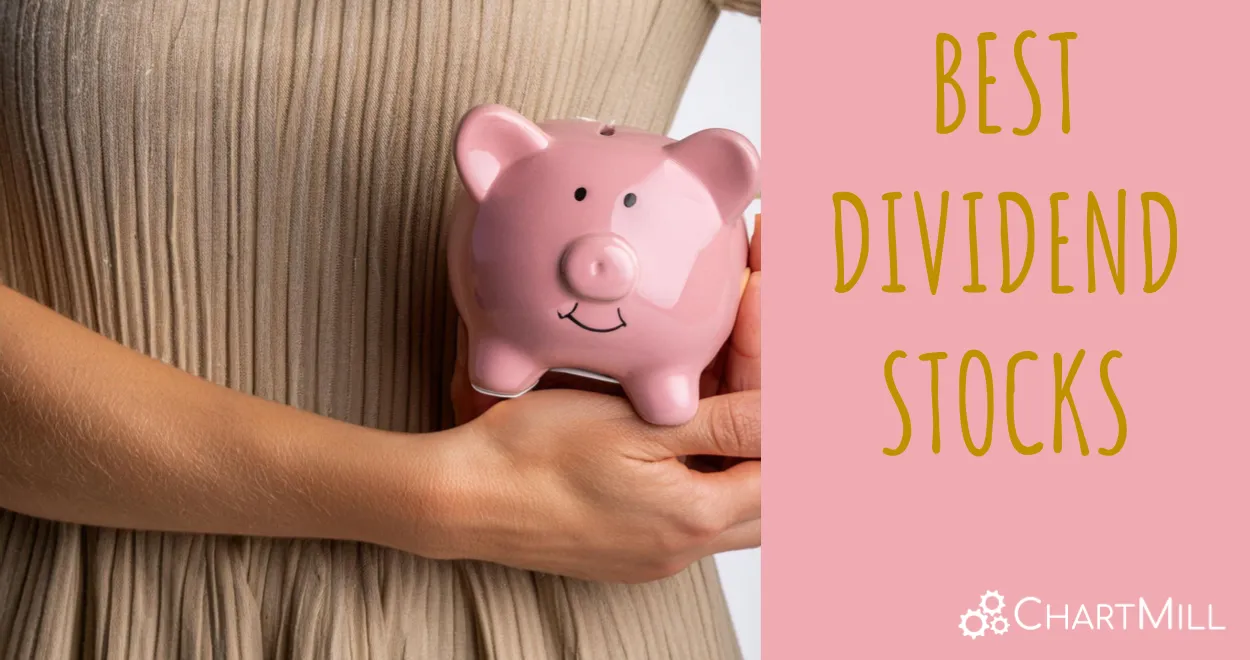Exploring NYSE:SQM's dividend characteristics.
By Mill Chart
Last update: Sep 28, 2023
Our stock screener has spotted QUIMICA Y MINERA CHIL-SP ADR (NYSE:SQM) as a good dividend stock with solid fundamentals. NYSE:SQM shows decent health and profitability. At the same time it gives a good and sustainable dividend. We'll dive into each aspect below.
How We Gauge Dividend for NYSE:SQM
ChartMill provides a Dividend Rating for every stock, ranging from 0 to 10. This rating assesses various dividend aspects, including yield, growth, and sustainability. NYSE:SQM earns a 8 out of 10:
- With a Yearly Dividend Yield of 10.90%, SQM is a good candidate for dividend investing.
- Compared to an average industry Dividend Yield of 1.96, SQM pays a better dividend. On top of this SQM pays more dividend than 100.00% of the companies listed in the same industry.
- SQM's Dividend Yield is rather good when compared to the S&P500 average which is at 2.64.
- The dividend of SQM is nicely growing with an annual growth rate of 98.58%!
- SQM has paid a dividend for at least 10 years, which is a reliable track record.
- The dividend of SQM is growing, but earnings are growing more, so the dividend growth is sustainable.
Assessing Health for NYSE:SQM
To gauge a stock's financial health, ChartMill utilizes a Health Rating on a scale of 0 to 10. This comprehensive evaluation encompasses liquidity and solvency, both in absolute terms and in comparison to industry peers. NYSE:SQM has earned a 8 out of 10:
- SQM has an Altman-Z score of 5.17. This indicates that SQM is financially healthy and has little risk of bankruptcy at the moment.
- SQM has a Altman-Z score of 5.17. This is amongst the best in the industry. SQM outperforms 81.40% of its industry peers.
- The Debt to FCF ratio of SQM is 2.06, which is a good value as it means it would take SQM, 2.06 years of fcf income to pay off all of its debts.
- SQM has a better Debt to FCF ratio (2.06) than 90.70% of its industry peers.
- A Debt/Equity ratio of 0.45 indicates that SQM is not too dependend on debt financing.
- Although SQM does not score too well on debt/equity it has very limited outstanding debt, which is well covered by the FCF. We will not put too much weight on the debt/equity number as it may be because of low equity, which could be a consequence of a share buyback program for instance. This needs to be investigated.
- SQM has a Current Ratio of 2.48. This indicates that SQM is financially healthy and has no problem in meeting its short term obligations.
- The Current ratio of SQM (2.48) is better than 60.47% of its industry peers.
- SQM has a better Quick ratio (1.81) than 68.60% of its industry peers.
Profitability Examination for NYSE:SQM
ChartMill assigns a Profitability Rating to every stock. This score ranges from 0 to 10 and evaluates the different profitability ratios and margins, both absolutely, but also relative to the industry peers. NYSE:SQM scores a 10 out of 10:
- SQM's Return On Assets of 34.56% is amongst the best of the industry. SQM outperforms 100.00% of its industry peers.
- SQM's Return On Equity of 71.10% is amongst the best of the industry. SQM outperforms 100.00% of its industry peers.
- SQM has a better Return On Invested Capital (46.56%) than 100.00% of its industry peers.
- The Average Return On Invested Capital over the past 3 years for SQM is significantly above the industry average of 11.32%.
- The last Return On Invested Capital (46.56%) for SQM is above the 3 year average (22.85%), which is a sign of increasing profitability.
- Looking at the Profit Margin, with a value of 35.24%, SQM belongs to the top of the industry, outperforming 97.67% of the companies in the same industry.
- In the last couple of years the Profit Margin of SQM has grown nicely.
- The Operating Margin of SQM (49.99%) is better than 100.00% of its industry peers.
- SQM's Operating Margin has improved in the last couple of years.
- SQM has a better Gross Margin (51.46%) than 100.00% of its industry peers.
- SQM's Gross Margin has improved in the last couple of years.
Our Best Dividend screener lists more Best Dividend stocks and is updated daily.
Check the latest full fundamental report of SQM for a complete fundamental analysis.
Disclaimer
Important Note: The content of this article is not intended as trading advice. It is essential to perform your own analysis and exercise caution when making trading decisions. The article presents observations created by automated analysis but does not guarantee any trading or investment outcomes. Always trade responsibly and make independent judgments.



